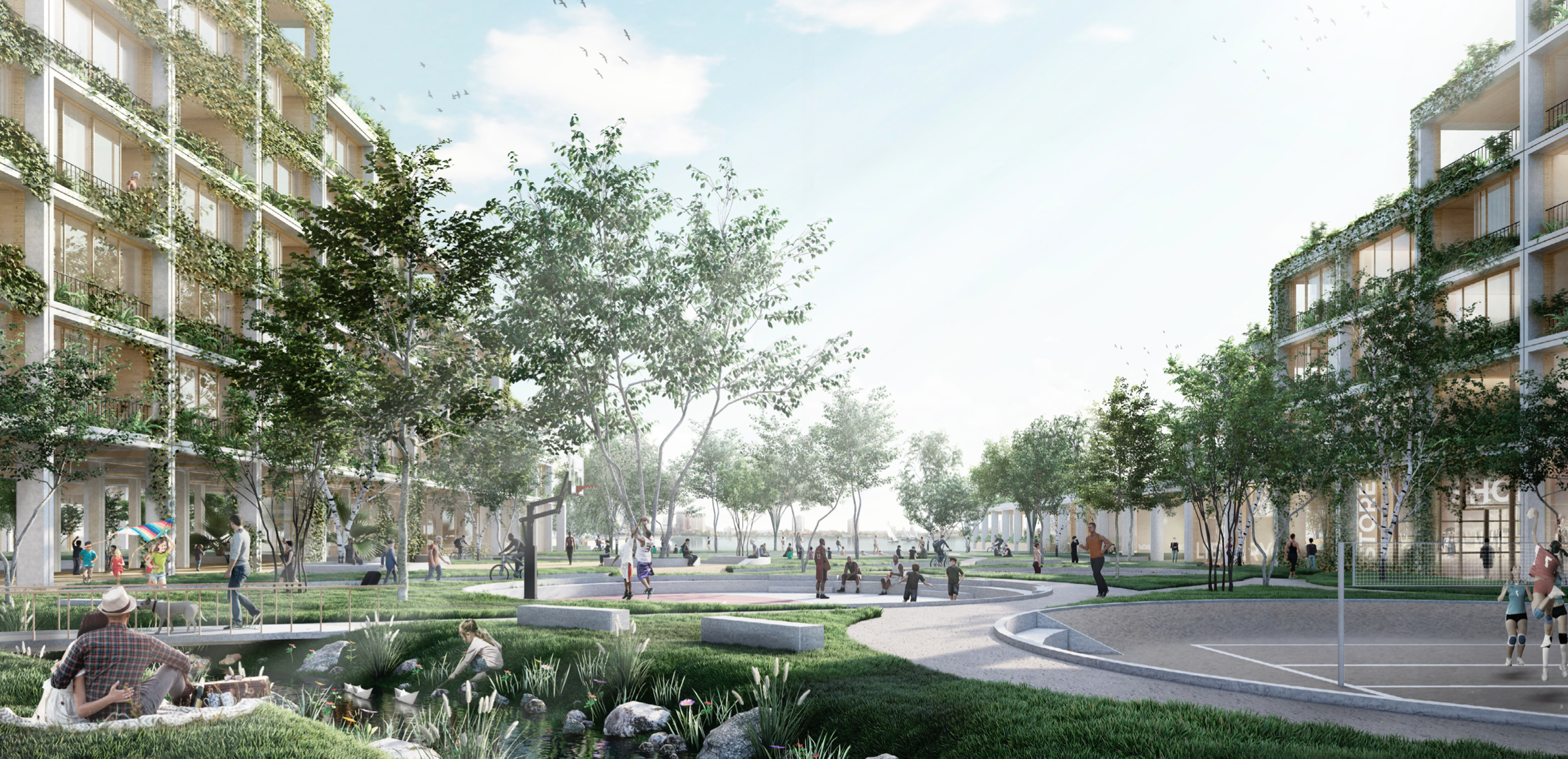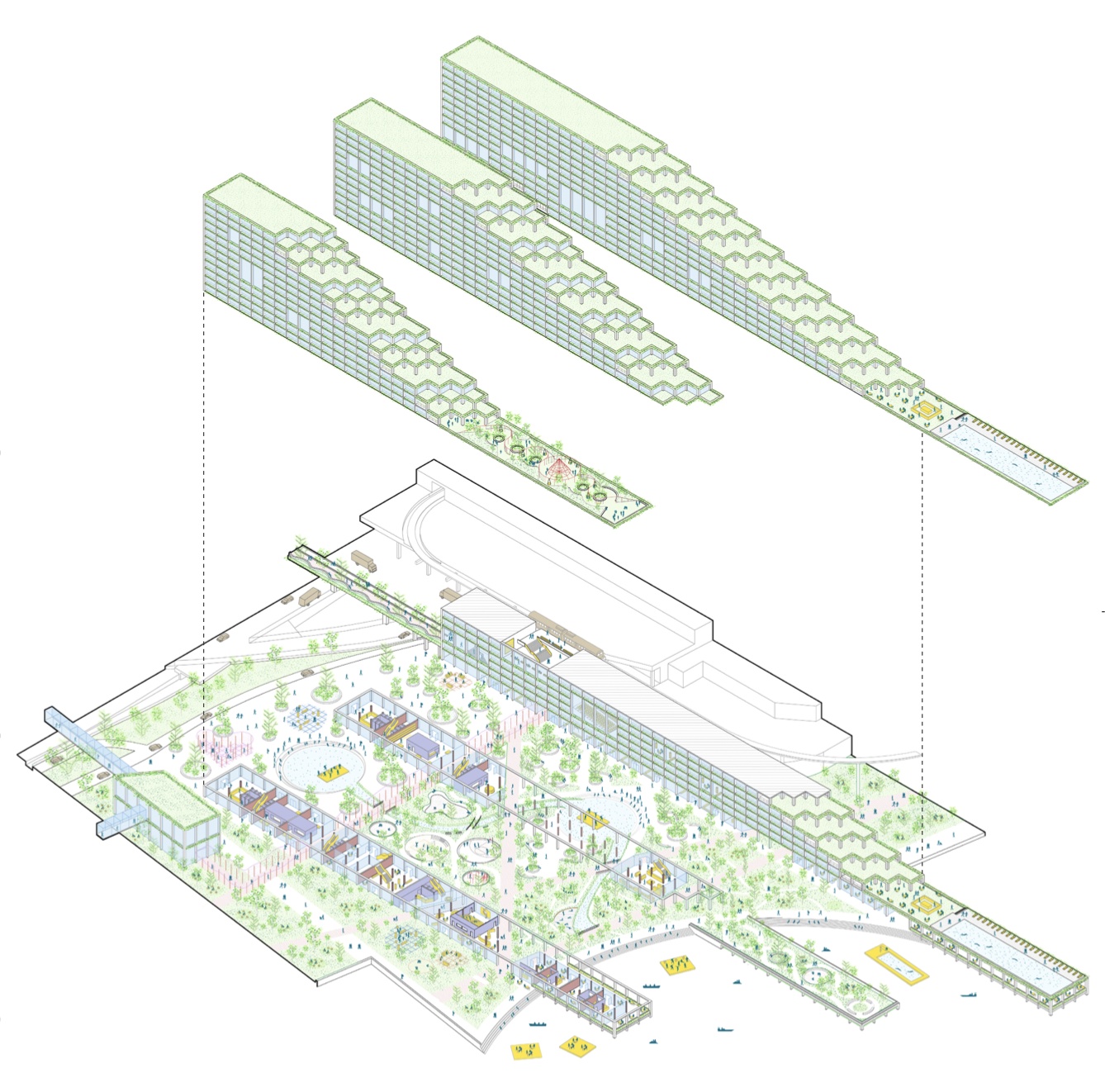Okuma wins second place for an offsite project of great social relevance
The Spanish team, formed by Miguel de Rojas, Gerardo Peregrín and Marc Amigó Cañas, ranked second at the Manni Group Design Award with the motto: “Let’s build the future of Detroit together”.
Three architectural structures covered in greenery slope down towards the river, creating endless opportunities for the various social communities and different cultures coexisting in Detroit: this is the Detroit Waterfront District, an area along the riverfront, in the world’s automobile capital.
This sustainable urban regeneration project was the theme of the second edition of the Manni Group Design Award contest, promoted by Manni Group in collaboration with YAC – Young Architects Competition and Sterling Group. The Spanish team Okuma, consisting of Miguel de Rojas, Gerardo Peregrín and Marc Amigó Cañas, came second and won a €4,000 prize.

After the major economic crisis of the last decades, Detroit has been experiencing a rebirth for a few years now. However, most of its population has been left out of this wave of innovation: this social imbalance has already done a lot of damage in the past and needs to be remedied if the city is to be given new life.
The contest launched by Manni Group provided the opportunity to reflect on the social and cultural role of architecture in a U.S. metropolis: the area designed by Okuma acts as a bridge between the various communities coexisting in Detroit and is open to all social classes.
But how does this inclusion actually work? The project is strongly focused on functional balance as it combines luxury hotels and flats with public parks and educational centres. The greenery is the ideal backdrop for the many opportunities for gatherings that the complex has to offer, and for its perfect integration with the element of water. Special emphasis has been placed on public transport and cycle paths as well as on the connection to the river via the piers.

The in-depth research into the project’s sustainability took into account the entire lifecycle of the building, including the construction process. The watchword is offsite: in fact, the buildings are made up of modules that are prefabricated at the production plant, which makes it possible to reduce costs and increase quality control on the materials; the modules are then transported by river directly to the site, thus reducing time, costs and environmental impact.
However, the most innovative feature of the project is the modular pyramid structure, which means that the building can be assembled and finished in record time. The load-bearing steel structure is made of Manni Sipre heavy steel frames.
The three architectural structures gently slope down towards the Detroit River so as not to alter the city skyline, creating a series of panoramic terraces covered in greenery. The use of green roofs also ensures better energy efficiency and quality of life.
The Detroit of the future will leave no one behind: Okuma’s proposal drastically reduces costs thanks to its innovative construction method, creating a cost-effective and healthy environment. The Detroit Waterfront District is therefore a new city centre attraction with a low environmental impact and of great social relevance.


